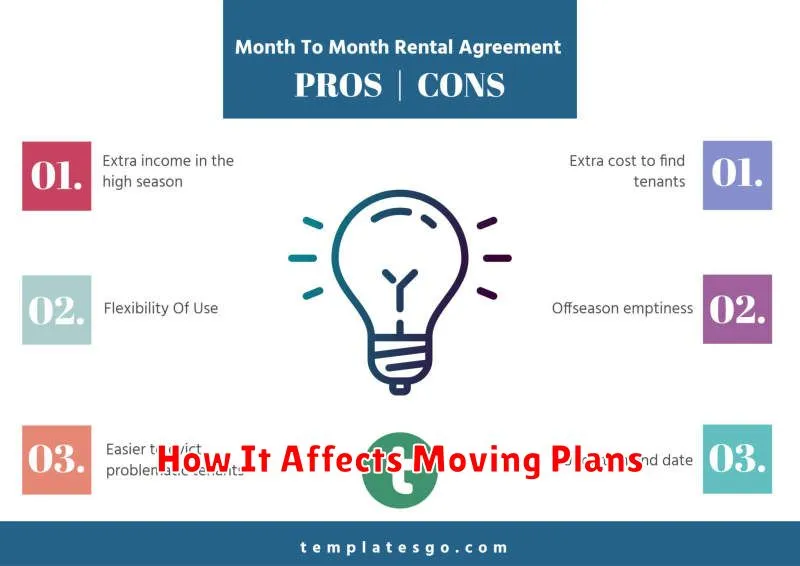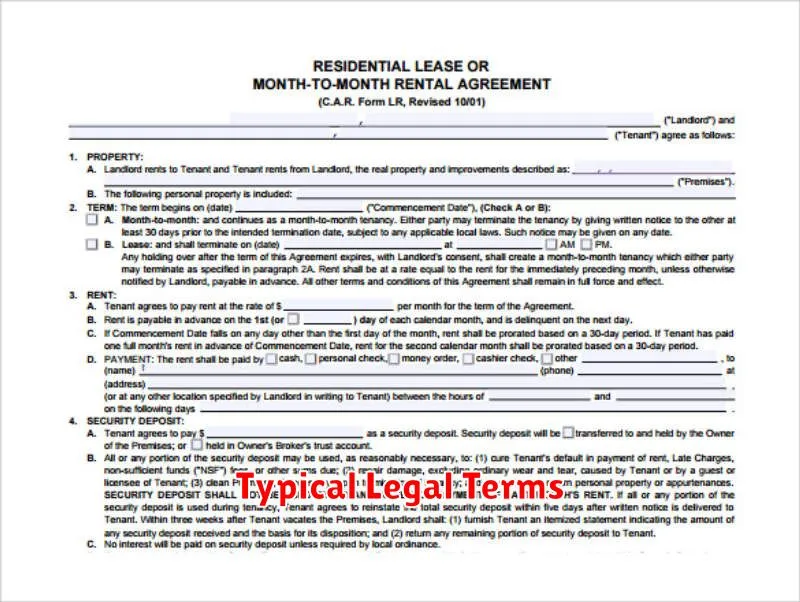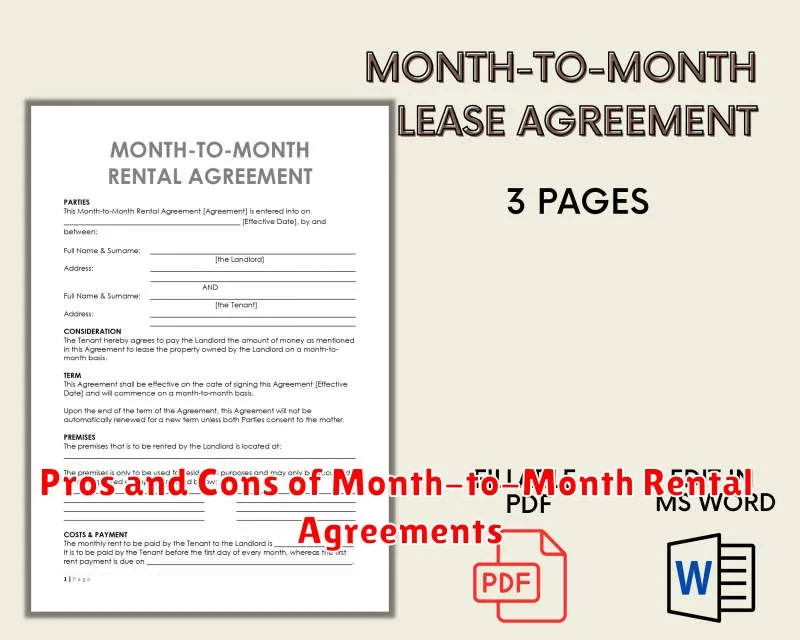Considering a month-to-month rental agreement? Understanding the pros and cons of this type of lease is crucial before you sign. This flexible housing option offers distinct advantages and disadvantages compared to traditional, fixed-term leases. Weighing these pros and cons carefully will help you determine if a month-to-month rental agreement is the right choice for your current situation. We will explore the benefits and drawbacks of month-to-month leases for both landlords and tenants, covering aspects such as flexibility, cost, and stability.
Month-to-month rental agreements offer unparalleled flexibility, appealing to those with uncertain futures. However, this flexibility comes at a price, often with higher rental costs and less stability. Conversely, fixed-term leases offer price stability and housing security but lack the freedom of a month-to-month arrangement. This article will delve into the specifics of both arrangements, allowing you to make an informed decision regarding your next rental agreement. We’ll examine key aspects like notice requirements, rent increases, and lease termination clauses, providing a comprehensive overview of month-to-month rental agreements and their potential impact on both landlords and tenants.
What Is Month-to-Month Rent?
Month-to-month rent, also known as a tenancy-at-will, is a lease agreement that renews every month. Unlike a fixed-term lease (e.g., a one-year lease), a month-to-month agreement offers increased flexibility for both the landlord and the tenant. No long-term commitment is required, meaning either party can terminate the agreement with proper notice, typically 30 days.
Essentially, the lease automatically renews at the end of each month unless either party provides notice of termination. This means the terms of the agreement, such as the rental amount, can be adjusted with proper notice within the specified timeframe. This differs from a fixed-term lease where the rent and other terms remain constant for the entire lease duration.
Flexibility Benefits
Month-to-month leases offer significant flexibility, a primary advantage for certain renters. This arrangement allows tenants to easily relocate without being bound by a long-term contract. This is particularly beneficial for individuals experiencing a transitional period, such as those relocating for work or personal reasons.
The short-term nature also provides a convenient trial period for a new city or neighborhood. Renters can experience the area firsthand before committing to a longer lease. If the location proves unsuitable, they can easily move elsewhere with minimal hassle.
Moreover, month-to-month agreements offer adaptability to changing life circumstances. A change in job status, family size, or financial situation might necessitate a move, and a month-to-month lease facilitates this process.
Drawbacks to Consider
While month-to-month leases offer flexibility, they also come with potential downsides. Rent increases are a significant consideration. Landlords are typically allowed to raise rent with proper notice, which can create budget uncertainty.
Lack of stability is another drawback. Your landlord can choose not to renew your lease, giving you a limited time to find new housing. This can be particularly challenging in competitive rental markets.
Limited negotiating power is often present with shorter-term leases. Landlords may be less willing to negotiate on price or other terms due to the inherent flexibility of the agreement.
Amenities and services may also differ. Some month-to-month rentals may not include the same amenities or services as longer-term leases, such as parking or included utilities.
How It Affects Moving Plans

Month-to-month agreements offer significant flexibility regarding moving plans. With a shorter commitment period, tenants can adjust their living arrangements more easily. This is a major advantage for individuals who anticipate a potential relocation due to job changes, family circumstances, or other unforeseen events.
The notice period, typically 30 days, provides both tenants and landlords a reasonable timeframe to prepare for the transition. This predictability simplifies the moving process, mitigating the stress associated with breaking a long-term lease. Tenants avoid potential penalties and landlords have ample opportunity to find new occupants.
However, this flexibility is a double-edged sword. The landlord also retains the right to terminate the agreement with proper notice. This means tenants might have to move sooner than anticipated if the landlord decides to sell the property, renovate, or rent to someone else. While this is less common than tenant-initiated moves, it’s a crucial factor to consider when evaluating the stability of a month-to-month agreement.
Typical Legal Terms

Month-to-month rental agreements, while offering flexibility, still involve legally binding terms. These terms, often outlined in a written agreement, govern the tenancy and protect both the landlord and the tenant. Understanding these key provisions is crucial for a smooth rental experience.
Notice Period: A core component is the required notice period for termination. This stipulates the timeframe either party must provide before ending the tenancy. Common notice periods are 30 or 60 days, giving both sides adequate time to prepare.
Rent Payment: The agreement will detail the amount of rent due, the due date, and acceptable payment methods. Late payment penalties should also be clearly defined.
Security Deposit: Information regarding the security deposit, its purpose (covering potential damages), and the conditions for its return should be included.
Maintenance Responsibilities: The agreement should clearly outline the responsibilities of both the landlord (e.g., major repairs) and the tenant (e.g., routine upkeep).

